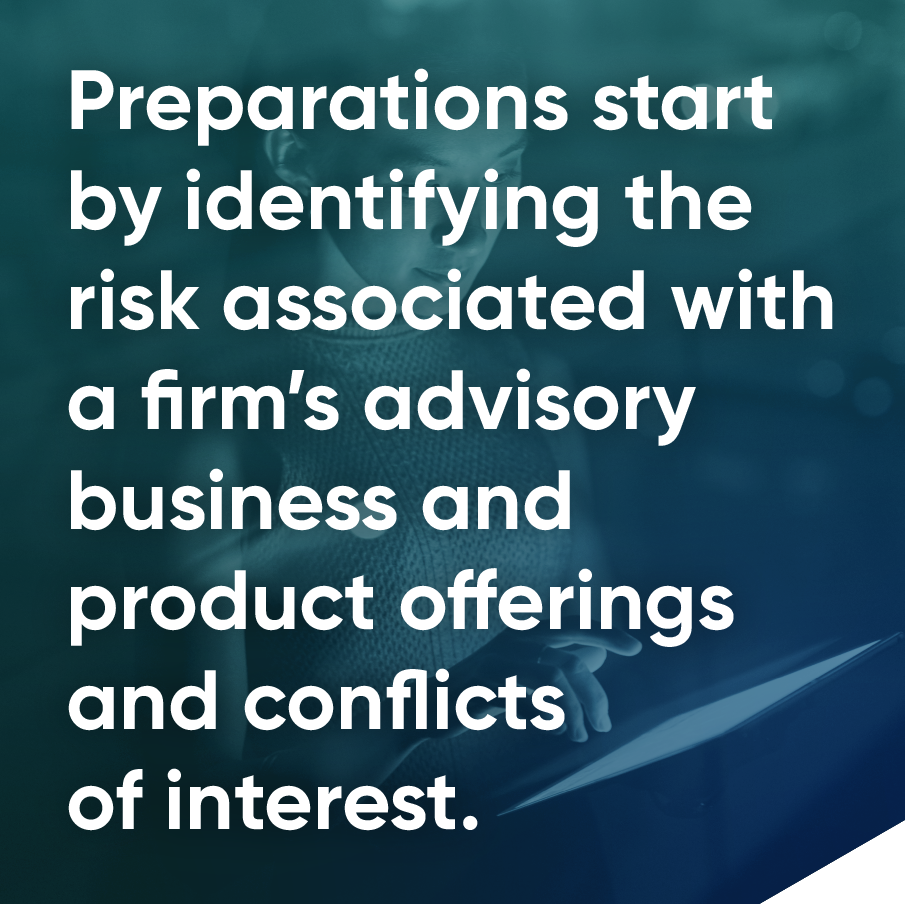Behind the Curtain – SEC’s Risk-Based Approach to Examinations
The SEC Division of Examinations (“EXAMS”) issued a Risk Alert describing EXAMS’ risk-based approach for selecting registered investment advisers to examine and determining the scope of examinations. The Risk Alert included an example of a typical initial request for documents and information, as well as examples of additional information that EXAMS may request during the examination process. The Alert identified three (3) components used to assess an adviser’s risks and scoping examinations:
- Selecting firms to examine;
- Selecting examination focus areas; and
- Selecting documents to request.
Selecting Firms to Examine
Given the size and variety of the adviser population, EXAMS utilizes a dynamic risk-based approach for selecting advisers to examine and determining the scope of the examination. EXAMS’ approach is designed to adapt to changes in markets conditions, industry practice, and investor preferences. An adviser may be selected for an examination to evaluate the risks present at a particular firm, to respond to events that pose risks to investors and markets, or to evaluate how registrants are responding to new regulatory requirements. Roughly 15% of the more than 15,000 registered advisers are examined in any particular year.
EXAMS selects advisers for examinations for a variety of reasons. The reasons include firm-specific risk factors and/or factors such as a tip, complaint, or referral, or the staff’s interest in a particular compliance risk area. The annual priorities published by EXAMS provide a guide for understanding the topics on which EXAMS may focus.
With respect to specific risk factors, EXAMS uses data analytics to identify an adviser’s products and services and assess the associated risk. EXAMS considers firm-specific risk factors based on a particular adviser’s business activities, conflicts of interest, and regulatory history. For example, consideration may be given to prior examination observations such as repetitive deficient practices or other significant compliance program concerns, the length of time since registration or an adviser’s last exam, or media reports that either involve or impact a firm.
Selecting Examination Focus Areas
After an adviser is selected for examination, EXAMS evaluates risk factors to determine the scope of the examination. Reviews of an adviser’s compliance program generally include a review of the adviser’s operations, disclosures, conflicts of interest, and compliance practices with respect to core areas including custody and safekeeping of client assets, marketing and advertising, valuation, portfolio management, fees and expenses, as well as brokerage and best execution.
Selecting Documents to Request
An examination typically begins with a letter from EXAMS notifying an adviser of the exam and a request to produce documents. The scope of the information requested varies depending on the focus areas of the examination. The Risk Alert included an attachment with the staff’s typical initial request for documents and information. That attachment and the full risk alert can be found at the link below:
Takeaways from the Risk Alert
EXAMS has provided an overview of their process for selecting advisers for examinations. Advisers should use this information to be prepared for an examination. Preparations start by identifying the risk associated with a firm’s advisory business and product offerings and conflicts of interest. Such risks and conflicts need to be incorporated into a firm’s written compliance policies along with policies designed to address regulatory requirements.

The next step is to test and evaluate your policies and their effectiveness. Testing is also a means of determining whether a firm is retaining required records and they are accessible for production when requested.
The final step is education. Share the information discussed in the Risk Alert with management teams and supervised persons so that the firm is prepared for a regulatory examination.
To learn more about the examination process, industry practices, and how to prepare, please use the link below:
Book a Strategy Call


